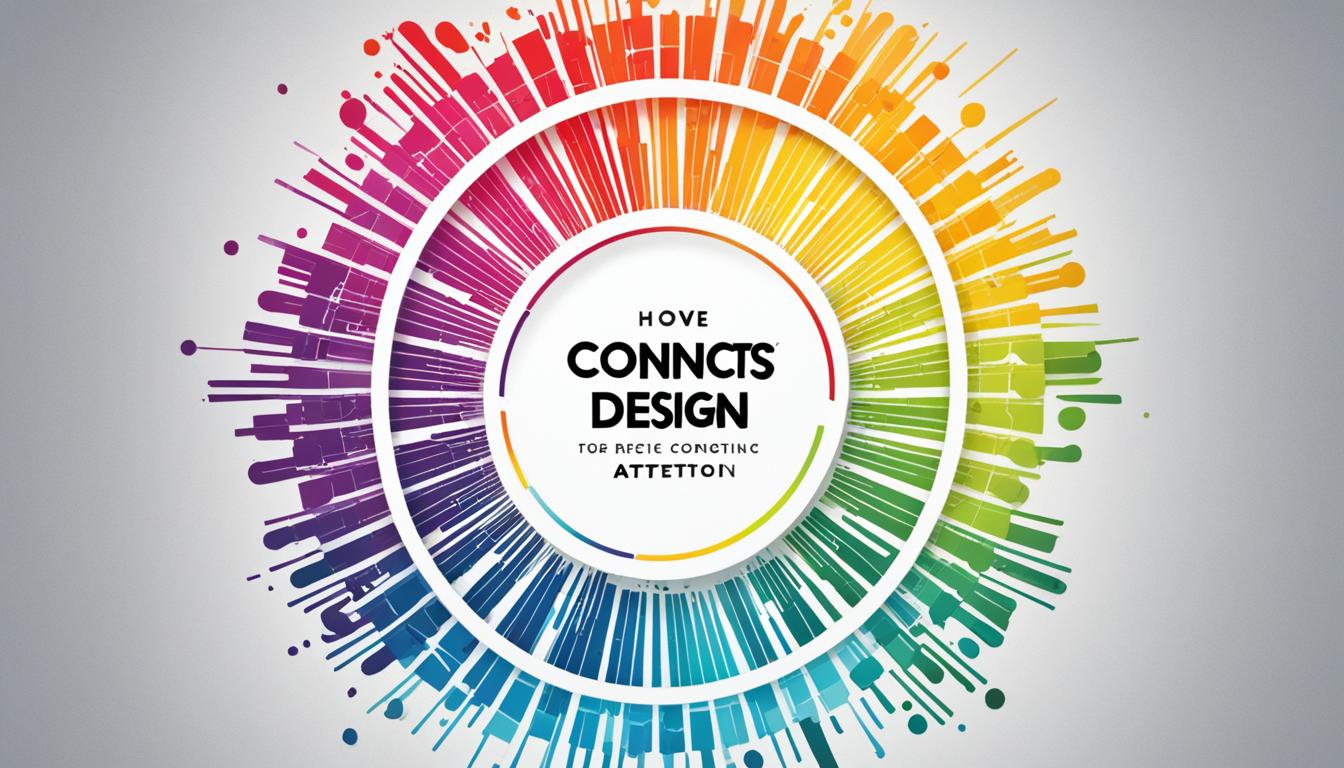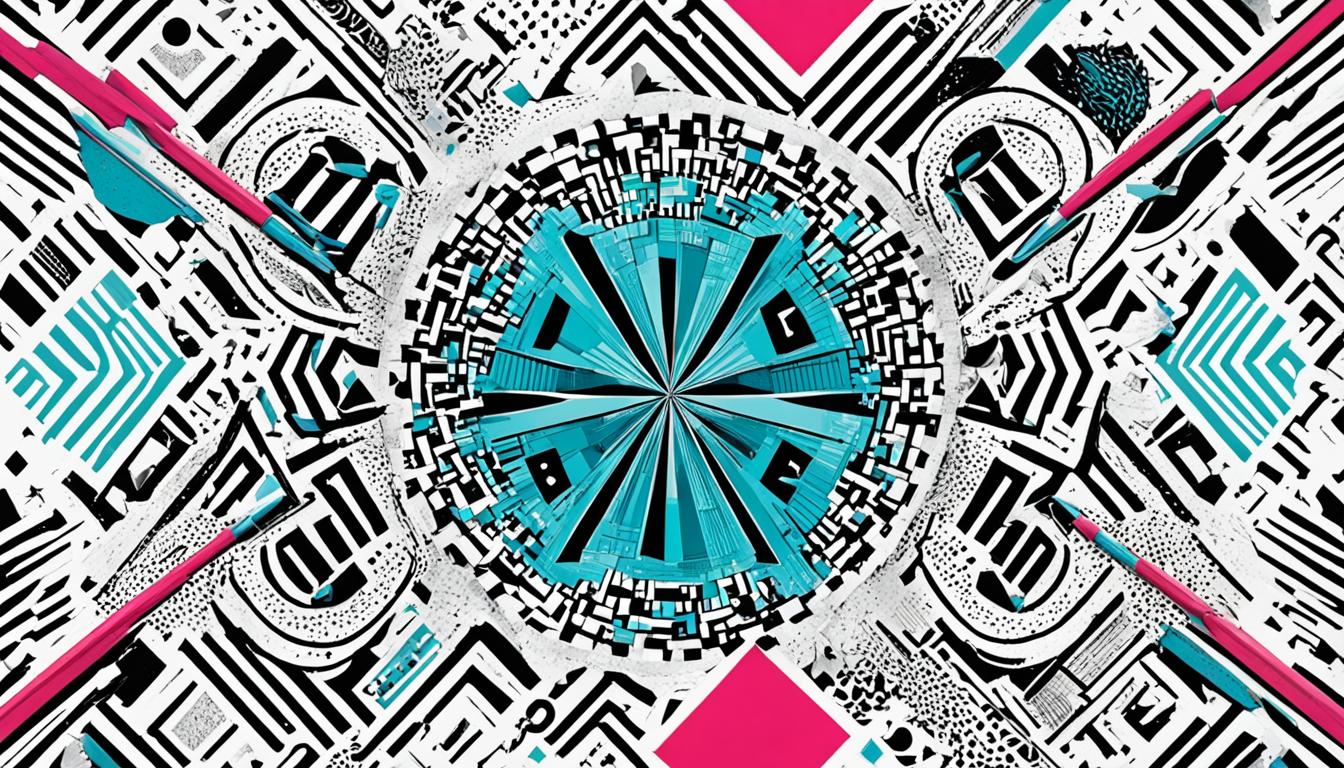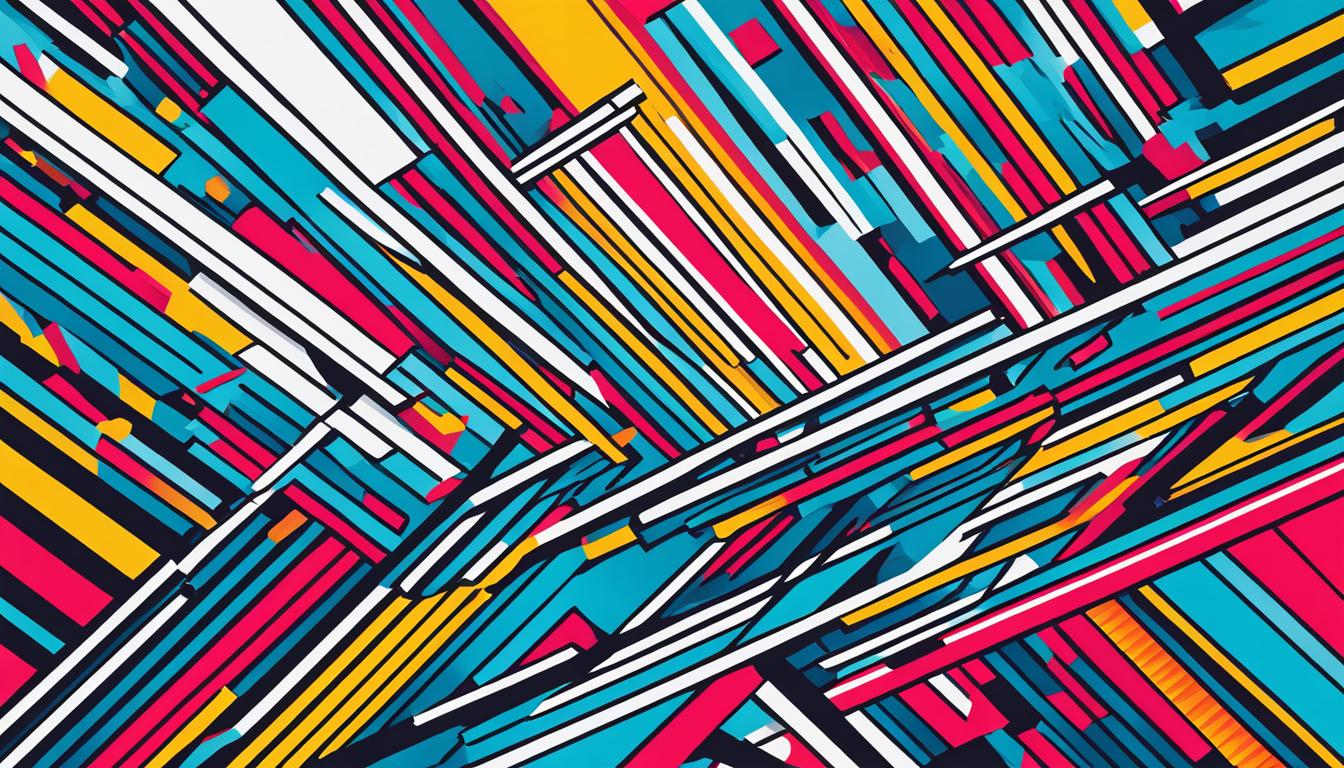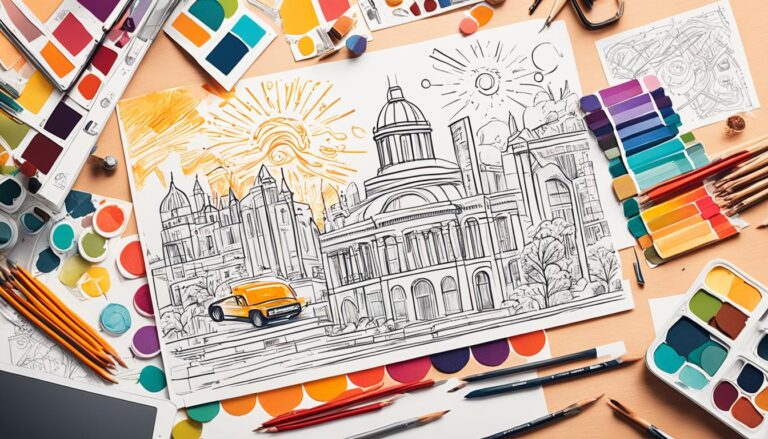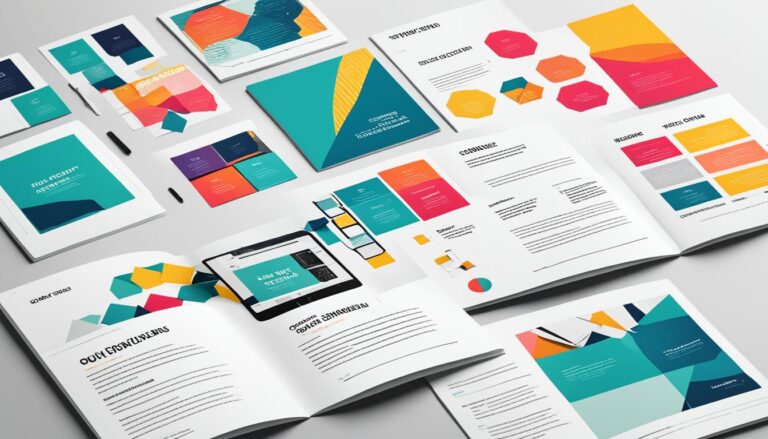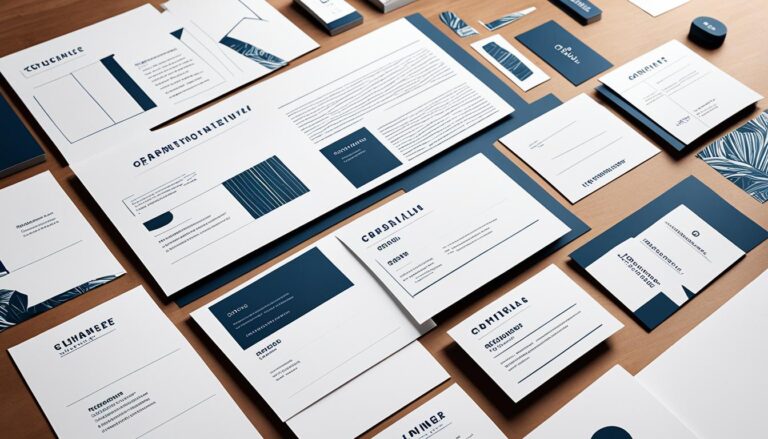Understanding What is a Graphic Design Essentials
Graphic design is a vital component in creating visual appeal and effective marketing methods. It involves curating images that convey specific moods, tones, or feelings, making it an essential tool for advertising and communication. From product packaging to website design, graphic design is present in various aspects of our lives, including magazine covers, posters, billboards, and more. To master this craft, graphic designers need a strong foundation in essential skills such as color theory, hierarchy, contrast, formatting, and the selection of appropriate fonts.
A strong understanding of color theory is key in choosing the right colors to evoke desired emotions and reactions. Contrast helps create visual interest and ensures messages stand out, capturing the attention of viewers. Formatting involves arranging and spacing elements in a visually appealing way to create a harmonious composition. Additionally, having a collection of essential fonts allows for consistency and brand recognition.
For beginners in graphic design, numerous books are available to learn and master the fundamental principles. These resources provide guidance on color theory, contrast, formatting, essential fonts, and more, helping aspiring graphic designers hone their skills and unleash their creativity.
By understanding the essentials of graphic design, professionals in this field can create unique and attention-grabbing visuals that effectively communicate their message. From conveying emotions to capturing audience attention, graphic design has a significant impact on the success of marketing campaigns and overall brand image. Stay tuned to explore the basics and advanced techniques in graphic design, as well as the future trends shaping the industry.
The Basics of Graphic Design
In graphic design, understanding the basics is crucial for creating visually appealing and impactful designs. Let’s explore some key elements that form the foundation of graphic design.
Color Theory
Color theory plays a vital role in graphic design as it helps in choosing the right colors to convey the desired message. Different colors evoke different emotions and have psychological effects. By understanding the principles of color theory, graphic designers can create designs that elicit the desired emotional response from their audience.
Contrast
Contrast is another important concept in graphic design. It involves using contrasting elements to create visual interest and make the message stand out. By strategically using contrast in color, size, shape, and typography, designers can draw attention to specific elements and create a visually dynamic composition.
Formatting
Formatting refers to the arrangement and spacing of elements within a design. It plays a crucial role in creating a visually pleasing composition. Proper formatting helps guide the viewer’s eye, create hierarchy, and ensure a clear and organized presentation of information. Attention to detail in formatting can significantly enhance the overall effectiveness of a design.
Essential Fonts
The selection of appropriate fonts is essential in graphic design. Fonts contribute to the overall aesthetic and help convey the intended message. Using a consistent set of essential fonts can create brand recognition and maintain visual consistency across different design pieces. It is important for designers to have a collection of versatile and widely-used fonts to choose from.
Graphic Design Books
For beginners looking to learn and master the fundamental principles of graphic design, there are several valuable books available. These books cover a range of topics, including design theory, typography, layout, and composition. They provide insights and practical examples that can help aspiring graphic designers develop their skills and deepen their understanding of the field.
| Book Title | Author | Publication Year |
|---|---|---|
| Thinking with Type: A Critical Guide for Designers, Writers, Editors and Students | Ellen Lupton | 2010 |
| The Elements of Typographic Style | Robert Bringhurst | 1992 |
| Layout Essentials: 100 Design Principles for Using Grids | Beth Tondreau | 2009 |
| Graphic Design: The New Basics | Ellen Lupton and Jennifer Cole Phillips | 2008 |
Advanced Techniques in Graphic Design
Graphic designers have the opportunity to take their designs to the next level by exploring advanced techniques that go beyond the basics. By incorporating these techniques into their work, designers can create visually stunning and engaging designs that captivate audiences. Let’s explore some of these advanced techniques:
User Experience (UX) and User Interface (UI) Principles
Understanding UX and UI principles is crucial for creating intuitive and visually appealing digital products. UX focuses on enhancing user satisfaction by improving the usability, accessibility, and interaction of a design. UI, on the other hand, deals with the visual elements of a design, such as layouts, colors, and typography, to create a seamless user experience. By considering both UX and UI principles, designers can create designs that are not only aesthetically pleasing but also functional and user-friendly.
Motion Graphics
Motion graphics add life and storytelling to designs, making them more dynamic and engaging. By incorporating animation, designers can bring static elements to life, creating visual interest and capturing the attention of viewers. Whether it’s a subtle motion effect or a full-blown animated sequence, motion graphics can elevate the overall design and deliver a memorable user experience.
3D Design
With 3D design, graphic designers can create realistic and captivating visuals that go beyond the limitations of traditional 2D graphics. By adding depth and dimension to their designs, designers can evoke a sense of realism and create a more immersive visual experience. From product renderings to architectural visualizations, 3D design offers endless possibilities for creative expression.
Artificial Intelligence (AI) in Graphic Design
The integration of artificial intelligence (AI) in graphic design is an emerging trend that has the potential to revolutionize the industry. AI can automate repetitive design tasks, allowing designers to focus on more creative aspects of their work. From generating design options to assisting with layout and composition, AI can enhance productivity and streamline design workflows. By leveraging AI, graphic designers can push the boundaries of their creativity and deliver innovative solutions.
In conclusion, advanced techniques in graphic design offer exciting opportunities for designers to push their creative boundaries and deliver visually stunning designs. By incorporating UX/UI principles, exploring motion graphics and 3D design, and leveraging AI, designers can stay at the forefront of the industry and create cutting-edge designs that captivate audiences.
The Future of Graphic Design
The future of graphic design is being shaped by emerging technologies that have the potential to revolutionize the industry. One of these technologies is augmented reality (AR) and virtual reality (VR), which offer new and immersive ways of interacting with information. With AR/VR, designers can create interactive and engaging experiences that go beyond traditional 2D graphics, opening up exciting opportunities for storytelling and user engagement.
Another significant development is the integration of artificial intelligence (AI) into graphic design tools and workflows. AI has the potential to automate repetitive tasks, streamline design processes, and generate innovative design solutions. From assisting with font selection to suggesting color palettes, AI empowers designers to work more efficiently, unleashing their creativity and allowing them to focus on higher-level tasks.
Inclusive design is also gaining importance in the graphic design industry. Designers are recognizing the need to create designs that are accessible to people with disabilities, ensuring that everyone can have equal access to information and experiences. By incorporating inclusive design principles, designers can create designs that accommodate diverse needs and provide a more inclusive user experience.
Furthermore, graphic designers need to be aware of the impact of good design on SEO and digital marketing metrics. By incorporating SEO best practices into their designs, such as optimizing images, using proper heading tags, and providing descriptive alt text, designers can improve the visibility and accessibility of their designs in search engine results. This not only enhances the user experience but also boosts the effectiveness of digital marketing efforts.
FAQ
What is graphic design?
Graphic design is the process of curating an image for enhanced visual appeal. It is a form of visual communication that can convey a certain mood, tone, or feeling and be used for advertising purposes or as a marketing method.
What are some examples of graphic design?
Graphic design is present in various aspects of our lives, including product packaging, website design, magazine covers, posters, billboards, and more.
What are some essential skills for graphic designers?
Graphic designers should have a strong foundation in essential skills such as color theory, contrast, formatting, and the selection of appropriate fonts.
How does color theory impact graphic design?
Color theory plays a crucial role in choosing the right colors to convey the desired message. Different colors have different psychological effects, and understanding this can help create the desired impact.
Why is contrast important in graphic design?
Contrast helps create visual interest and make the message stand out in graphic design.
What is formatting in graphic design?
Formatting refers to the arrangement and spacing of elements in an image. It is essential to create a visually appealing composition.
Why are essential fonts important for graphic designers?
Having a collection of essential fonts is important for graphic designers, as it helps maintain consistency and recognition for brands.
Are there any recommended graphic design books for beginners?
Yes, there are various books available that can help beginners learn and master the fundamental principles of graphic design.
What are some advanced techniques in graphic design?
Advanced techniques in graphic design include understanding user experience (UX) and user interface (UI) principles, incorporating motion graphics, exploring 3D design, and integrating artificial intelligence (AI) in design workflows.
How do emerging technologies shape the future of graphic design?
Emerging technologies such as augmented reality (AR) and virtual reality (VR), along with the integration of artificial intelligence (AI), have the potential to transform the way we interact with information and create immersive experiences.
Why is inclusive design important in graphic design?
Inclusive design focuses on creating designs that are accessible to people with disabilities and is gaining importance in the industry.
How does good design impact SEO and digital marketing?
Graphic designers should be aware of the impact of good design on SEO and digital marketing metrics and incorporate SEO best practices into their designs.
